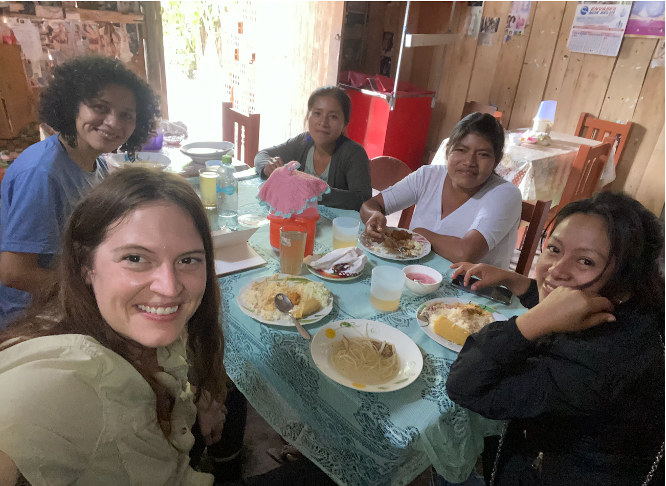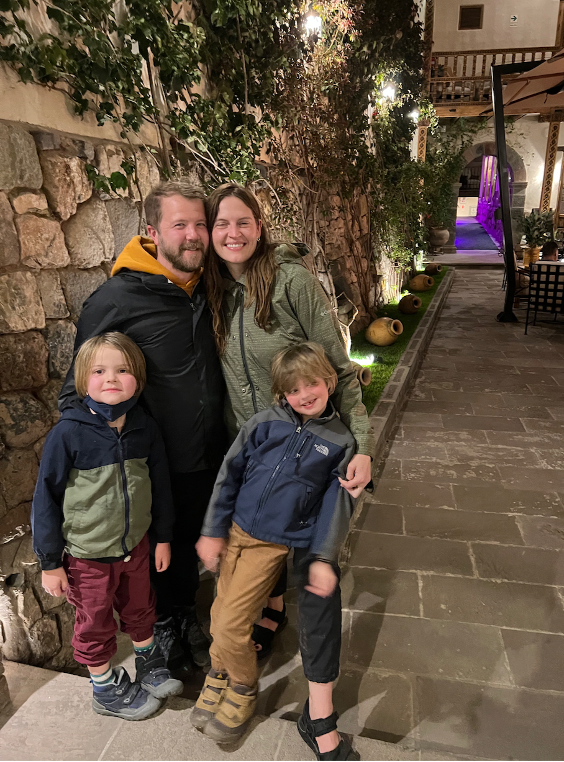By Lauren Cooper
My work as Program Director for the Forest Carbon and Climate Program at Michigan State University (MSU) is about exploring and understanding the dynamics of forests and climate change. Yet, within that space, the researcher in me is most curious about measuring the human, and particularly gender, dimensions that impact sustainable forest conservation. In many ways, my interests mirror those of the Mission of the Women’s Forest Congress (WFC) in creating safe spaces to connect, inspire, and act as a catalyst for change. Fortunately, I have had, and continue, to have the opportunity to explore these aspirations.
For a few years, I have been the lead for MSU in its collaboration with Pontificia Universidad Católica del Perú (PUCP) and the Peruvian Ministry of the Environment’s Forest Program (Programa Bosques in Spanish) in the Bosques + Gente(Forests and People) Initiative. One key component of the program is the Conditional Direct Transfer (TDC in Spanish) mechanism, which provides funds for sustainable development activities alongside community-based forest conservation plans.
Since its inception, the TDC has provided incentives to more than 275 communities toward conserving 2.9 million hectares of forest. These programs require participating communities to develop livelihood plans that identify food production or revenue streams that meet community needs, while conforming to the objectives of forest conservation. Many communities develop plans that rely on sustainable agriculture, ecotourism, or the production of folk arts and crafts. For example, female artisans in some villages now use tree seeds to create jewelry and sow preferred species to renew forests and sustain material. Their actions make sense from a cultural, economic, and conservation perspective, expressing themselves through their art, while sustaining their families, their communities, and their lands.
With TDC funding renewed for an additional ten years, our research team can now identify practical, measurable, and actionable approaches that strengthen the link between conservation and communities. Key to this is integrating a social equity component into TDC programming, focusing on gender differences in program implementation and impact. This is a fantastic opportunity to look at how this program affects gender relations in a community and develop recommendations for the program to engage communities in ways that promotes equity.
With the second largest share of the Amazon rainforest, Peru is crucial in the struggle against climate change. However, tensions exist between economic development and conservation – pressures that will not ease up anytime soon. As a child of Detroit’s inner-city, I recognize similar challenges in the United States. We place a heavy burden—too often with inadequate resources, knowledge, and assistance—in limiting emissions and preserving our natural resources while sustaining and promoting economic wellbeing for all community members.
That is why being a part of the WFC is so important to me. I’m inspired by WFC’s intergenerational composition, willingness to share experiences, motivation to create spaces for women, and commitment to diversity and inclusion. With their solidified voice, I believe that the WFC can bring about transformational change in the way we look at forests and forestry, here and abroad.
As I travel back to Peru–accompanied by my two lively and adventurous young children—I carry this belief that my team and I can be vehicles for change. With the right approach, we can help, just like those female Peruvian artisans, to link the forest and the community in equitable, mutually beneficial, and sustainable ways.

Lunch with research team member and Artisan Committee Leadership, Shimpiyacu community, Peru.

Cooper and family in Cusco, Peru following fieldwork in Madre de Dios.